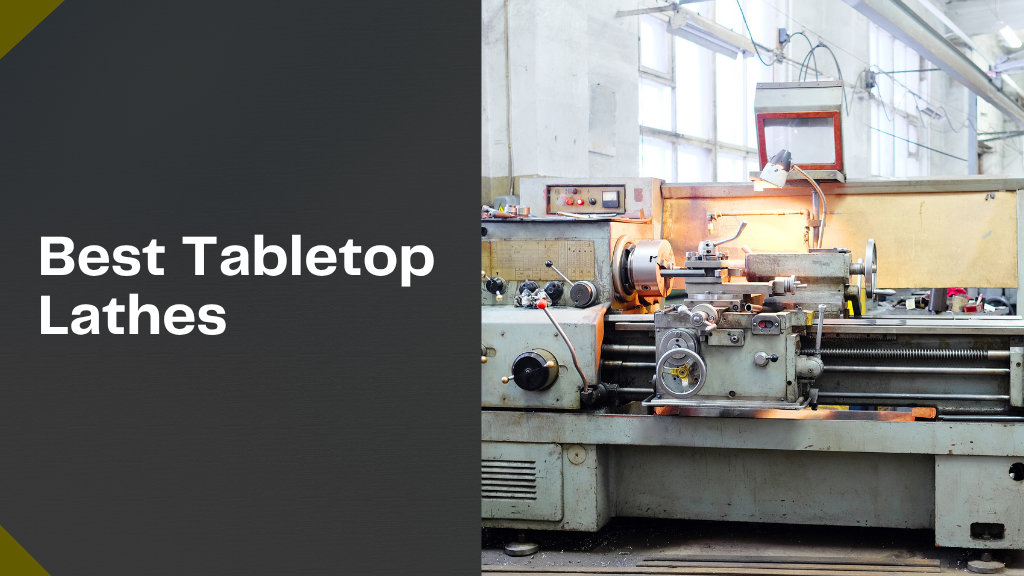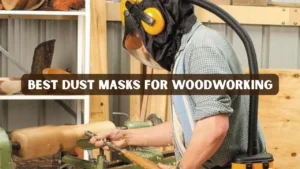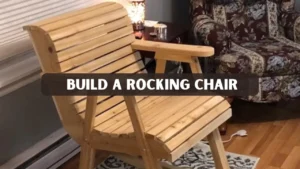If you are a hobbyist, small scale woodworker, or metalworking enthusiast, finding the best tabletop lathe can completely change how you work on projects. These compact machines allow you to create precise, detailed parts without taking up the space or budget of a full sized lathe. Whether you want to craft custom pens, turn miniature furniture legs, or machine small metal components, a quality tabletop lathe provides the versatility, control, and portability you need.
In this complete guide, we will explore everything you need to know about choosing the right tabletop lathe. You will learn about the most important features, the best models on the market for 2025, buying tips, maintenance advice, common mistakes to avoid, and frequently asked questions. This is written for readers in the USA and Western countries so it includes relevant voltage, sizing, and usage considerations.
Why Choose a Tabletop Lathe
Tabletop lathes, also called mini lathes or benchtop lathes, are compact versions of traditional full-size machines. They are designed to offer the same core functionality but in a smaller, more manageable package. These machines are especially popular among hobbyists, model engineers, and small-scale manufacturers because they combine portability with precision.
Main reasons people choose them:
- Space Saving: Ideal for home workshops, garages, or small studios where a full-size machine would be too large. They can be placed on a workbench and stored when not in use, making them perfect for limited spaces.
- Beginner Friendly: Their smaller size and lighter weight make them easier to handle, learn on, and control. They also tend to have fewer intimidating safety risks compared to heavy industrial machines, which is reassuring for newcomers.
- Precision Work: Tabletop lathes excel at small, detailed projects that require accuracy, such as model parts, jewelry, or custom fittings. Many models have fine control adjustments that allow for consistent, repeatable results.
- Lower Cost: While not as powerful as large lathes, mini lathes are significantly more affordable, offering excellent value for producing professional-quality work without a huge investment.
Example from experience: A model engineer in Oregon uses a 7×14-inch mini metal lathe to craft custom brass fittings for model steam engines. Despite its small footprint, the lathe delivers accuracy comparable to a larger machine, allowing him to produce parts with tight tolerances every time.
Key Features to Look For in the Best Tabletop Lathe
When comparing different models, pay attention to the specifications and features that matter most for your work.
1. Lathe Type
- Mini Wood Lathe: Best for woodturning projects such as pens, bowls, handles, and decorative pieces
- Mini Metal Lathe: Designed for precision machining of metals like aluminum, brass, and mild steel
2. Swing Over Bed
Swing over bed is the largest diameter workpiece the lathe can turn without touching the bed. For most hobby projects, a swing between 6 inches and 12 inches is common.
3. Distance Between Centers
This measures the maximum length of the workpiece that can fit between the headstock and tailstock. Most tabletop lathes range between 10 inches and 20 inches.
4. Motor Power
Motor power is measured in horsepower or watts.
- For wood: 1/3 to 1/2 horsepower is usually enough
- For metal: 3/4 to 1 horsepower is recommended to handle harder materials
5. Variable Speed Control
Variable speed lets you switch between slower speeds for precision work and faster speeds for quick material removal. Digital speed readouts make it easier to match the correct speed to the task.
6. Build Quality
Look for a cast iron bed to reduce vibration and improve stability. High quality steel parts also last longer and hold alignment better.
Best Tabletop Lathes for 2025
After reviewing performance tests, customer reviews, and expert feedback, these models are considered the top choices.
1. Jet JWL 1015 Wood Lathe
- Swing Over Bed: 10 inches
- Distance Between Centers: 15 inches
- Motor: 1/2 horsepower
- Speed Range: 500 to 3975 RPM
- Price Range: 600 to 700 USD
- Why It Stands Out: The Jet JWL 1015 offers excellent stability with its cast iron bed. It is smooth in operation and works well for both beginners and experienced woodturners.
- User Rating: 4.8 out of 5 from over 300 reviews
2. Grizzly G8688 Mini Metal Lathe
- Swing Over Bed: 7 inches
- Distance Between Centers: 12 inches
- Motor: 3/4 horsepower
- Speed Range: 0 to 2500 RPM
- Price Range: 900 to 1000 USD
- Why It Stands Out: Compact but powerful enough to handle threading, facing, and turning with great accuracy.
- User Rating: 4.6 out of 5 from over 250 reviews
3. WEN 3421 Mini Wood Lathe
- Swing Over Bed: 8 inches
- Distance Between Centers: 12 inches
- Motor: 3.2A which is similar to 1/3 horsepower
- Speed Range: 750 to 3200 RPM
- Price Range: 150 to 200 USD
- Why It Stands Out: One of the most affordable entry level lathes that still delivers strong performance for hobby woodworkers.
- User Rating: 4.5 out of 5 from over 1000 reviews
4. Proxxon 34104 Micro Woodturning Lathe DB 250
- Swing Over Bed: 1.97 inches
- Distance Between Centers: 9.8 inches
- Motor: 100 watts
- Speed Range: 1000 to 5000 RPM
- Price Range: 300 to 350 USD
- Why It Stands Out: Designed for very small projects such as model ship parts or miniature spindles.
- User Rating: 4.7 out of 5 from over 150 reviews
5. Sherline 4400 Series Mini Lathe
- Swing Over Bed: 3.5 inches
- Distance Between Centers: 17 inches
- Motor: 90V DC with adjustable speed control
- Speed Range: 70 to 2800 RPM
- Price Range: 1000 USD and higher
- Why It Stands Out: Known for precision work. Often used for scientific instruments and high detail model making.
- User Rating: 4.9 out of 5 from over 100 reviews
Comparison Table of Best Tabletop Lathes
| Model | Type | Swing Over Bed | Distance Between Centers | Motor Power | Speed Range (RPM) | Price Range USD |
|---|---|---|---|---|---|---|
| Jet JWL 1015 | Wood | 10 in | 15 in | 1/2 HP | 500 to 3975 | 600 to 700 |
| Grizzly G8688 | Metal | 7 in | 12 in | 3/4 HP | 0 to 2500 | 900 to 1000 |
| WEN 3421 | Wood | 8 in | 12 in | 1/3 HP | 750 to 3200 | 150 to 200 |
| Proxxon DB 250 | Wood | 1.97 in | 9.8 in | 100W | 1000 to 5000 | 300 to 350 |
| Sherline 4400 | Metal | 3.5 in | 17 in | 90V DC | 70 to 2800 | 1000+ |
How to Maintain a Tabletop Lathe
Regular maintenance is essential to keep your tabletop lathe accurate, safe, and in top working condition for years. Proper care also helps prevent costly repairs and downtime.
- Clean After Every Use: Remove dust, metal shavings, and chips with a soft brush or vacuum. Pay attention to the bed, tool post, and chuck to prevent debris from scratching or damaging precision surfaces.
- Lubricate Moving Parts: Follow the manufacturer’s lubrication schedule. Apply oil or grease to the spindle, lead screw, and other moving components to reduce friction and prevent rust.
- Check Alignment and Calibration: Periodically test the tailstock, tool post, and bed alignment to ensure cuts remain precise. Adjust as needed to maintain accuracy.
- Inspect Belts, Gears, and Bearings: Look for cracks, fraying, or signs of wear. Replace worn parts promptly to avoid sudden breakdowns.
- Use Within Its Limits: Avoid working with materials that are oversized or excessively hard for your lathe’s capacity, as this can strain the motor and damage components.
By following these steps, you’ll keep your tabletop lathe running smoothly and delivering consistent results for years.
Common Mistakes to Avoid
Avoiding these pitfalls will help you choose a lathe that truly meets your needs and delivers reliable performance.
- Choosing a Lathe Too Small for Your Projects: If the machine’s capacity is less than what your work requires, you’ll quickly outgrow it. Always consider the largest piece you plan to turn and choose accordingly.
- Skipping Variable Speed Control to Save Money: A fixed-speed lathe limits your ability to work with different materials and sizes. Variable speed control gives you better precision, versatility, and surface finish.
- Forgetting the Cost of Accessories and Tools: Chucks, cutting tools, centers, and measuring equipment can add significantly to the total investment. Budget for these essentials from the start.
- Buying Based Only on Brand Reputation: Even trusted brands make models with different specifications. Always check swing over bed, distance between centers, motor power, and speed range before purchasing.
- Ignoring Stability and Weight: A lightweight or unstable lathe is more prone to vibration, which can affect accuracy and surface quality. Heavier machines generally provide smoother, more precise operation.
Accessories That Improve Tabletop Lathe Performance
- Chucks and Collets: Hold workpieces of different shapes and sizes securely
- Cutting Tools: High speed steel and carbide tipped tools for long lasting cutting edges
- Centers and Drive Spurs: Provide accurate rotation and reduce vibration
- Tool Rests: Keep hand tools steady during woodturning
- Faceplates: Mount irregular shaped materials for turning
Expert Buying Tips
- For woodturners, aim for a swing of at least 10 inches if you plan to make bowls or larger spindles
- For metalworkers, check that the gearbox supports the threading pitches you need
- For beginners, avoid the cheapest models as they often require extra modifications before they can deliver consistent performance
Conclusion
The best tabletop lathe for you depends on the type of material you work with, the size of your projects, your workspace, and your budget.
If you want an affordable entry level lathe, the WEN 3421 is an excellent starting point. For metal precision work, the Grizzly G8688 stands out. For professional level woodturning, the Jet JWL 1015 offers unmatched stability and smoothness.
Before buying, evaluate your needs carefully, think about the long term, and remember that a good lathe is a long term investment. When chosen wisely and maintained properly, it will provide years of accurate and satisfying work.
FAQs
What is the best tabletop lathe for beginners
The WEN 3421 is widely recommended for new woodturners because it is affordable, compact, and simple to use.
Can a mini metal lathe cut steel
Yes. A quality mini metal lathe such as the Grizzly G8688 can cut mild steel, brass, and aluminum with the correct cutting tools.
Are tabletop lathes noisy
They are usually quieter than full sized lathes but noise levels vary based on material, cutting speed, and machine quality.
Do tabletop lathes require special power
Most run on standard 110 to 120 volt outlets which makes them convenient for home workshops in the USA.
What is the difference between swing over bed and distance between centers
Swing over bed is the largest diameter the lathe can turn. Distance between centers is the maximum length the workpiece can be.




